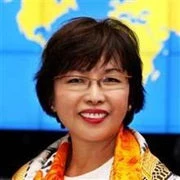The following piece is cross-posted at USAID's IMPACTblog, where World Bank Education Director Elizabeth King is a special guest blogger for International Women's Day.
 This week we celebrate International Women’s Day and it’s as good a time as any to remind ourselves of the remarkable accomplishments toward achieving gender equality—and of the challenges that remain to ensuring that the 3.4 billion girls and women on our planet have the same chances as boys and men to lead healthy and satisfying lives.
This week we celebrate International Women’s Day and it’s as good a time as any to remind ourselves of the remarkable accomplishments toward achieving gender equality—and of the challenges that remain to ensuring that the 3.4 billion girls and women on our planet have the same chances as boys and men to lead healthy and satisfying lives.
This year’s International Women’s Day theme, “equal access to education, training, and science and technology,” is a powerful affirmation of the many benefits of educating girls, which come from improving women’s well-being, such as through better maternal health and greater economic empowerment.
A recent Lancet article concluded that half of the decline in child mortality in low-income countries over the past 40 years can be attributed to better education of girls. Another recent study concluded that countries that have more educated women have coped with extreme weather conditions better than other countries—and these are just two studies that have found empirical evidence for why investing in girls’ education is smart policy.
Girls’ enrollment in primary education has risen from 79% to 87% in the past decade, and gender equality, as measured by the ratio of girls’ to boys’ enrollment rates, seems almost within sight. Even in rural areas in poor countries, more girls are entering school. But these gains have not been the same across countries or even within countries. Being poor, living in a rural area, being from an indigenous community and being a girl means having much less schooling. According to the 2010 UNESCO Global Monitoring Report, for example, poor Hausa girls in rural Nigeria complete only one-third of a year of schooling as compared with more than 10 years for rich, urban boys and girls. Indeed, in many countries across the world, multiple sources of disadvantage leave girls’ schooling lagging behind that of boys. The uphill battle for these girls in areas torn by conflict is even worse.
Special challenges exist for girls. These challenges may be a heavy workload that takes time away from schooling and learning. In Mozambique, for example, young teenage girls work 50% more hours each week than boys, not only cooking and taking care of younger siblings but also collecting water or firewood for their families. Because they are often not expected to use academic skills later in life, girls and their parents may not place sufficient value on schooling—and probably just as typically, their teachers may believe that it is more important to teach to the boys than to the girls in their classrooms.
When I first joined the World Bank 20 years ago, girls’ education was the first issue I worked on. With three other women who were passionate about the issue (two at USAID and one at an NGO), I organized the panel session on girls’ education at the Education for All conference in Jomtien, Thailand. We have come a long way since. We now know more about the effectiveness of programs such as targeted scholarships or vouchers, conditional cash transfers, and removal of tuition fees that influence the family’s demand for girls’ education. We also know that making more people aware of the benefits of girls’ education, measuring gender inequalities, and rallying more voices to speak about those inequalities are powerful ways to remind people of this critical development issue.
Educating girls is a priority for the World Bank and is a fundamental tenet of our forthcoming Education Strategy 2020, which is dedicated to ensuring that all children, everywhere, are afforded the right to learn and reach their full potential.
Photo credit: Arne Hoel/ World Bank


Join the Conversation